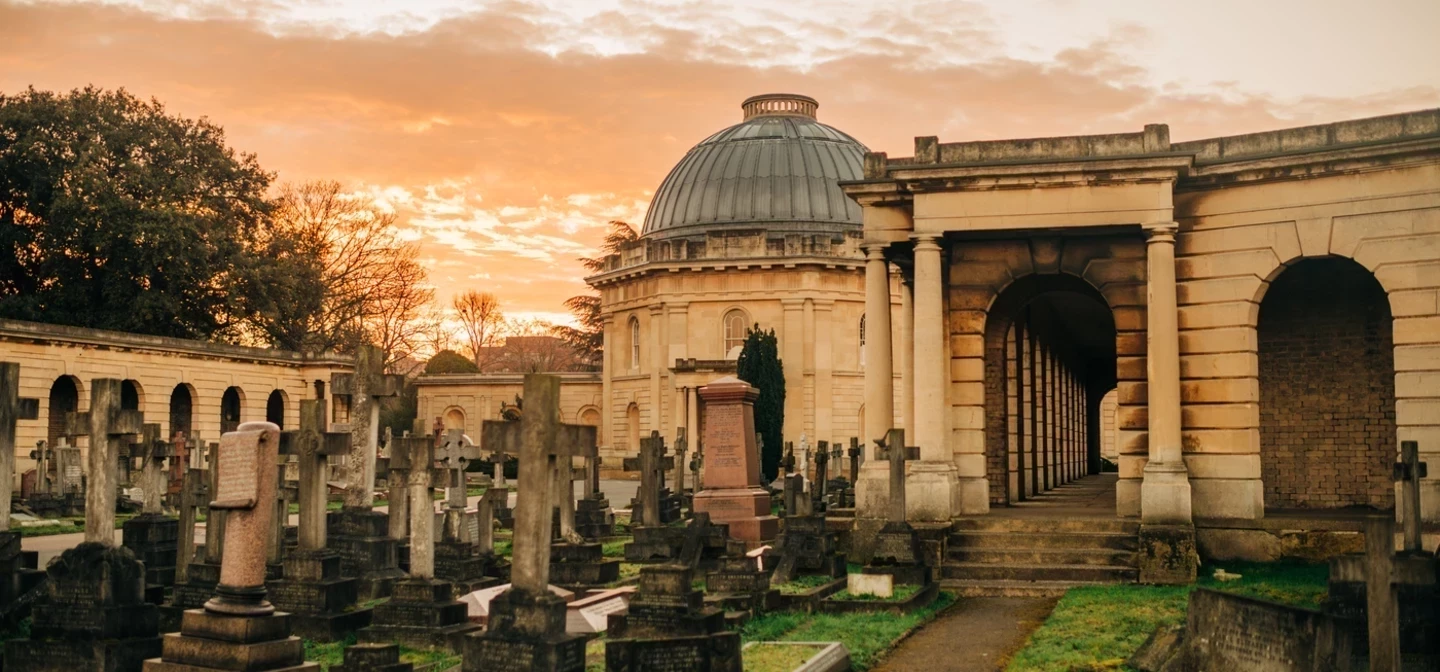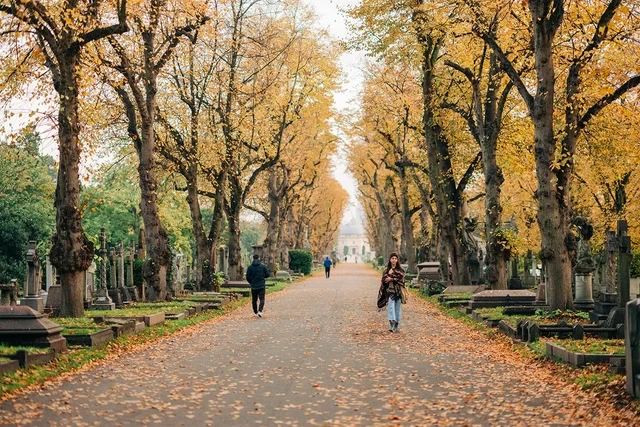
Welcome to Brompton Cemetery
Where the entire landscape was conceived as a garden as valuable for the living as for the dead.
Key information
Over 200,000 people lie in peace here, their lives commemorated with scores of spectacular memorials – from grieving angels and ivy-clad crosses to ornate mausoleums and imposing columns. Amidst these gothic monuments, the cemetery is teeming with life. Come and meander along its avenues of stately lime trees where, among the wildflowers, you’ll spot an abundance of wildlife. Birds, butterflies, bats and beetles all call Brompton Cemetery home.
As you wander around the cemetery, you may spot some familiar names. Amongst those laid to rest here are Emmeline Pankhurst, the courageous leader of the suffragettes who fought for women’s right to vote. Nearby is the grave of pioneering Doctor John Snow, who proved that cholera was spread by infected water. You could spend a lifetime discovering the stories of the people buried here – from artists and adventurers to sportspeople and socialites. In recent years, Brompton has become a working cemetery once again with new burials often taking place.
The architecture of this cemetery is certainly worthy of its eminent residents. The sweeping colonnades of the spectacular Great Circle frame the view along elegant Central Avenue to the imposing Chapel beyond. At the north end of the cemetery you’ll find a café where you can unwind with a quiet coffee, and an Information Centre where friendly volunteers can help you make the most of your visit. We’re sure you’ll agree that Brompton more than earns its place among London’s famous Victorian cemeteries, known as the ‘Magnificent Seven.
To delve deeper into Brompton Cemetery’s rich tapestry, consider exploring the captivating stories behind its prominent memorials. Noteworthy monuments include the grand mausoleum of Frederick Richards Leyland, an influential shipowner and art collector whose tomb reflects his Victorian-era wealth and taste. Another highlight is the poignant memorial to John Wisden, founder of the Wisden Cricketers' Almanack, commemorating his enduring contribution to cricket history.
Whether you’re drawn by its historical significance, architectural splendor, or tranquil natural beauty, Brompton Cemetery offers a profound experience that resonates with visitors of all interests. Join us in celebrating this remarkable London landmark, where history, art, and nature converge in a timeless testament to those who rest here.
Discover more about The Royal Parks
-
Why are trees so important?
Trees are vital. As the biggest plants on the planet, they give us oxygen, store carbon, stabilise the soil and give life to the world’s wildlife.
-
The best nature walks in London
A selection of the best nature walks in London for you to enjoy
